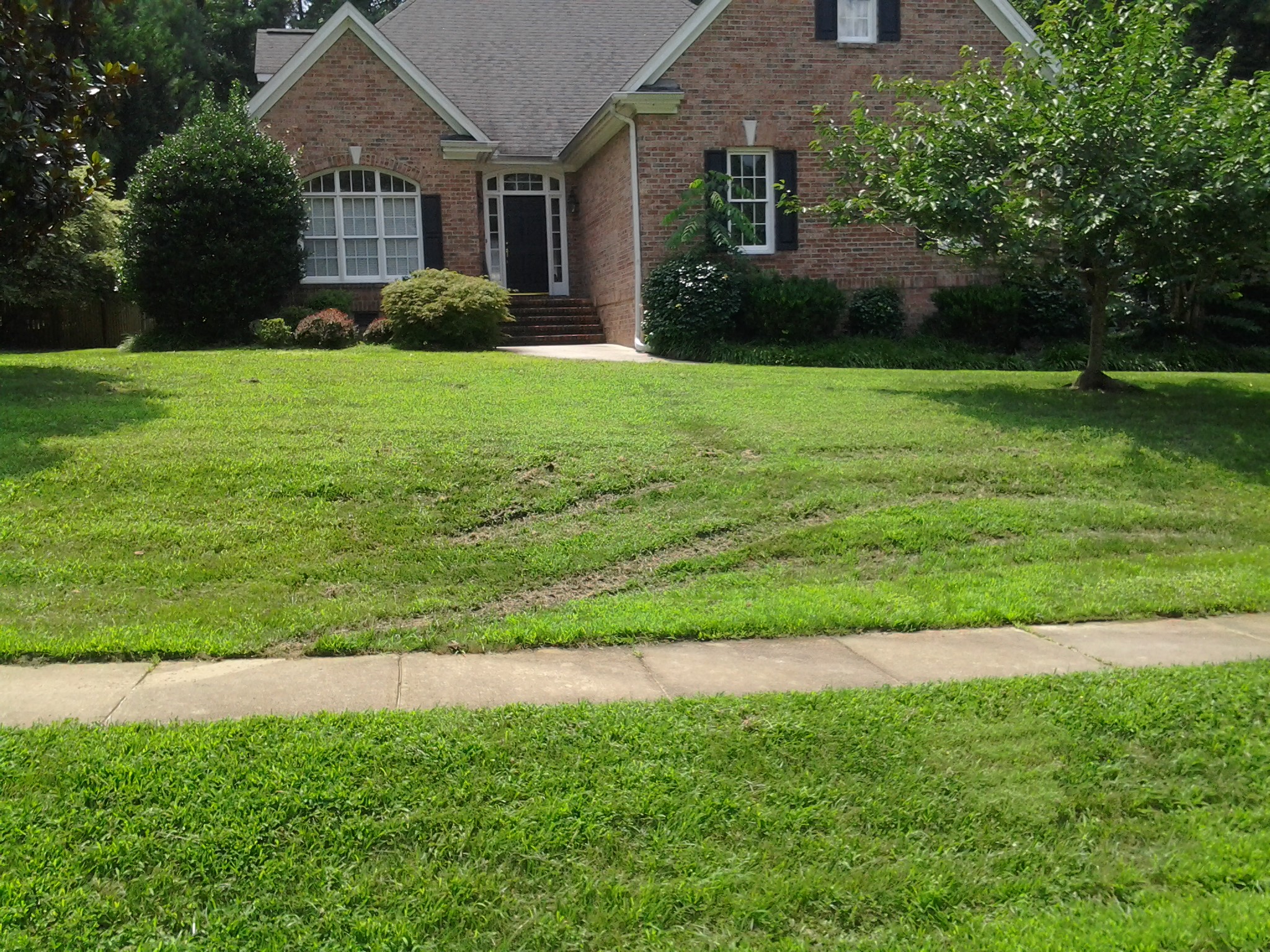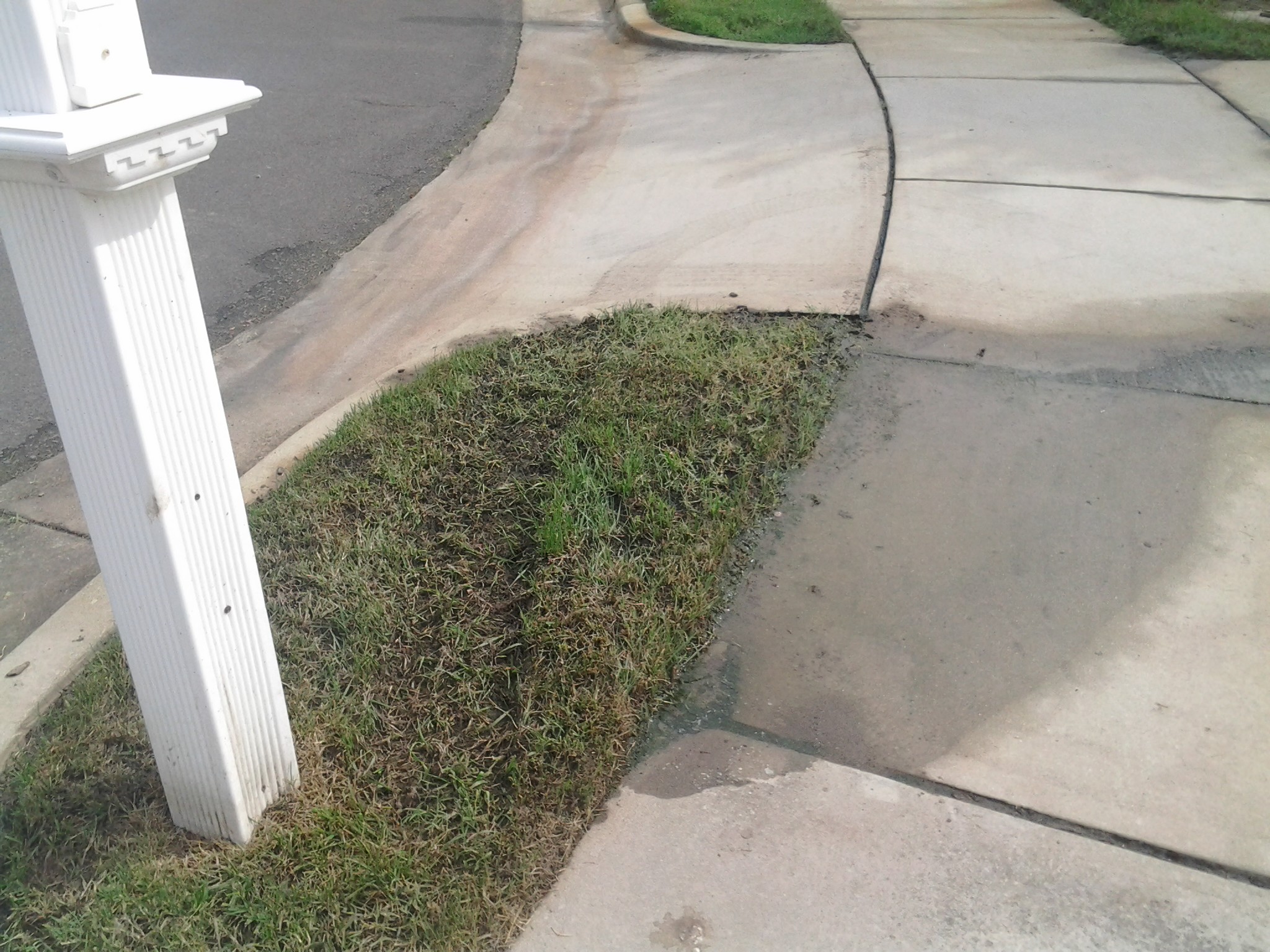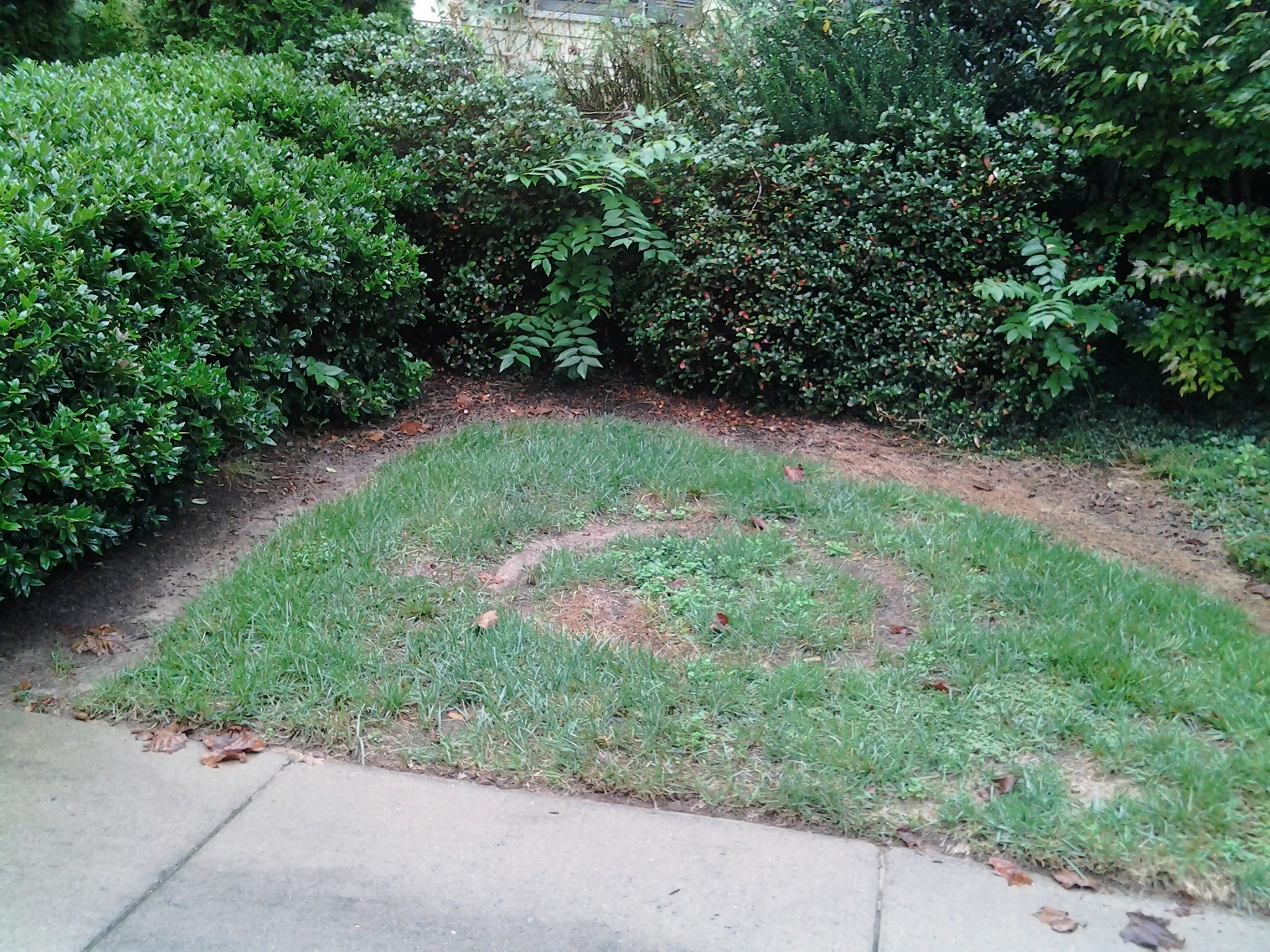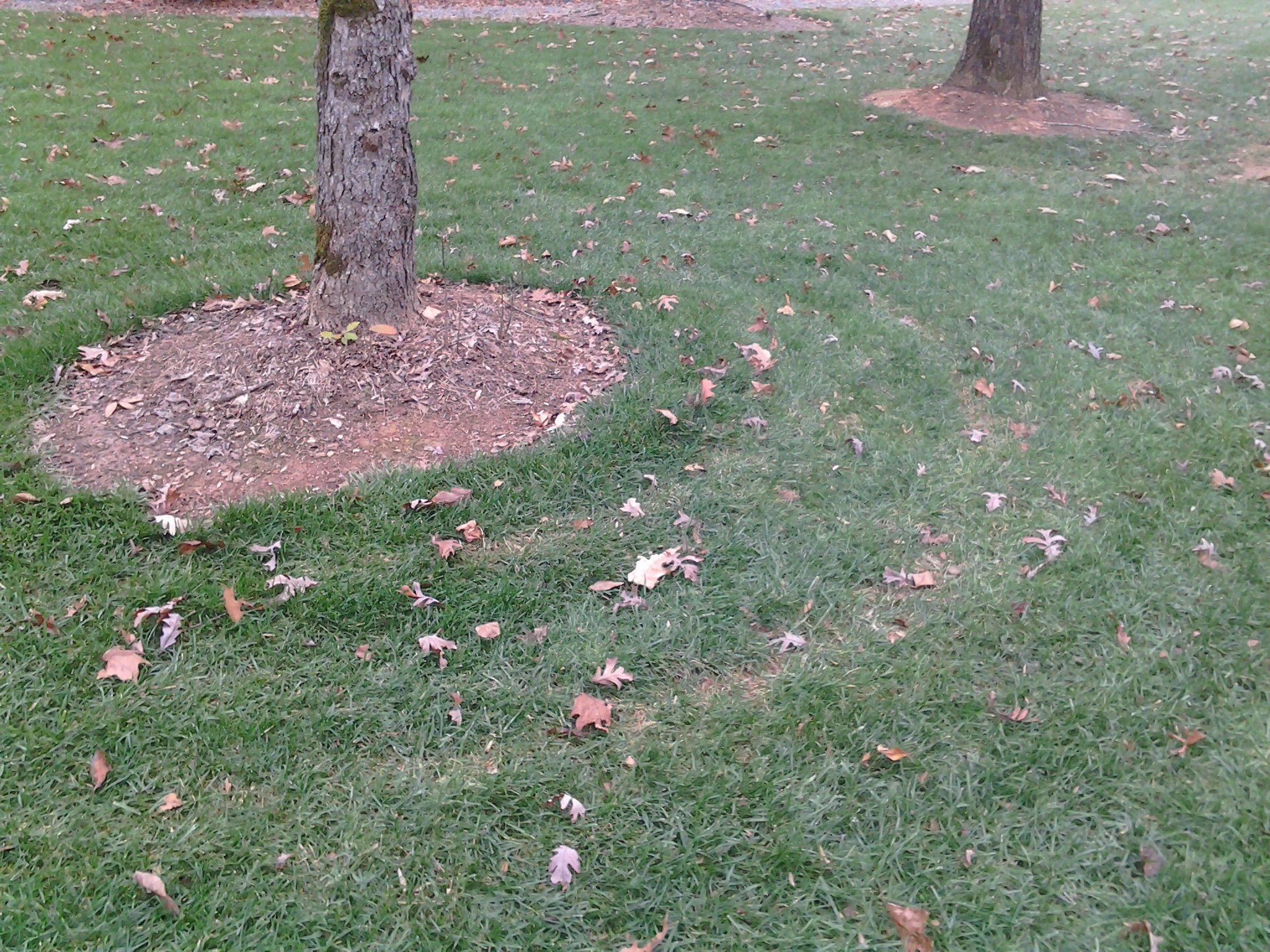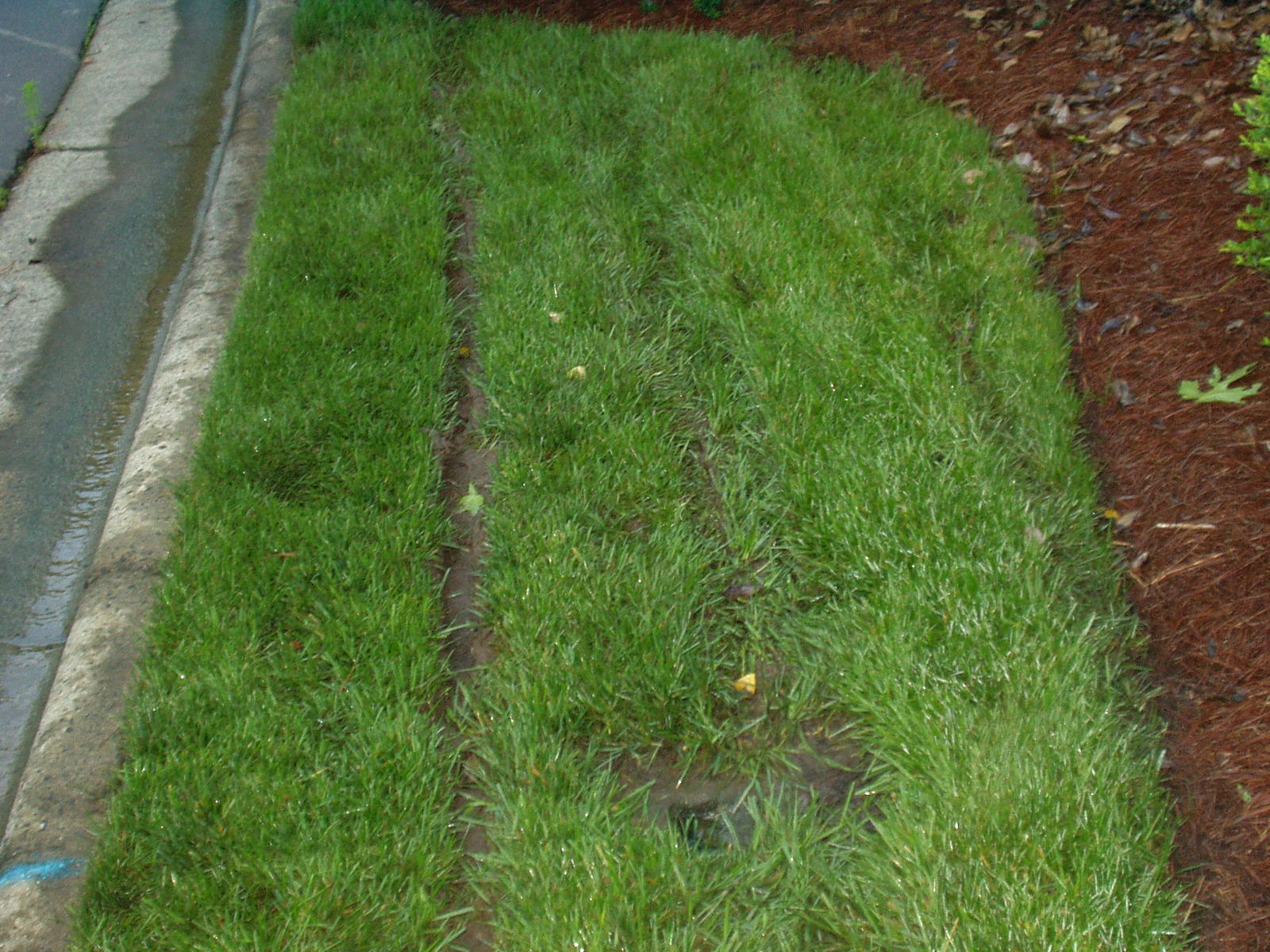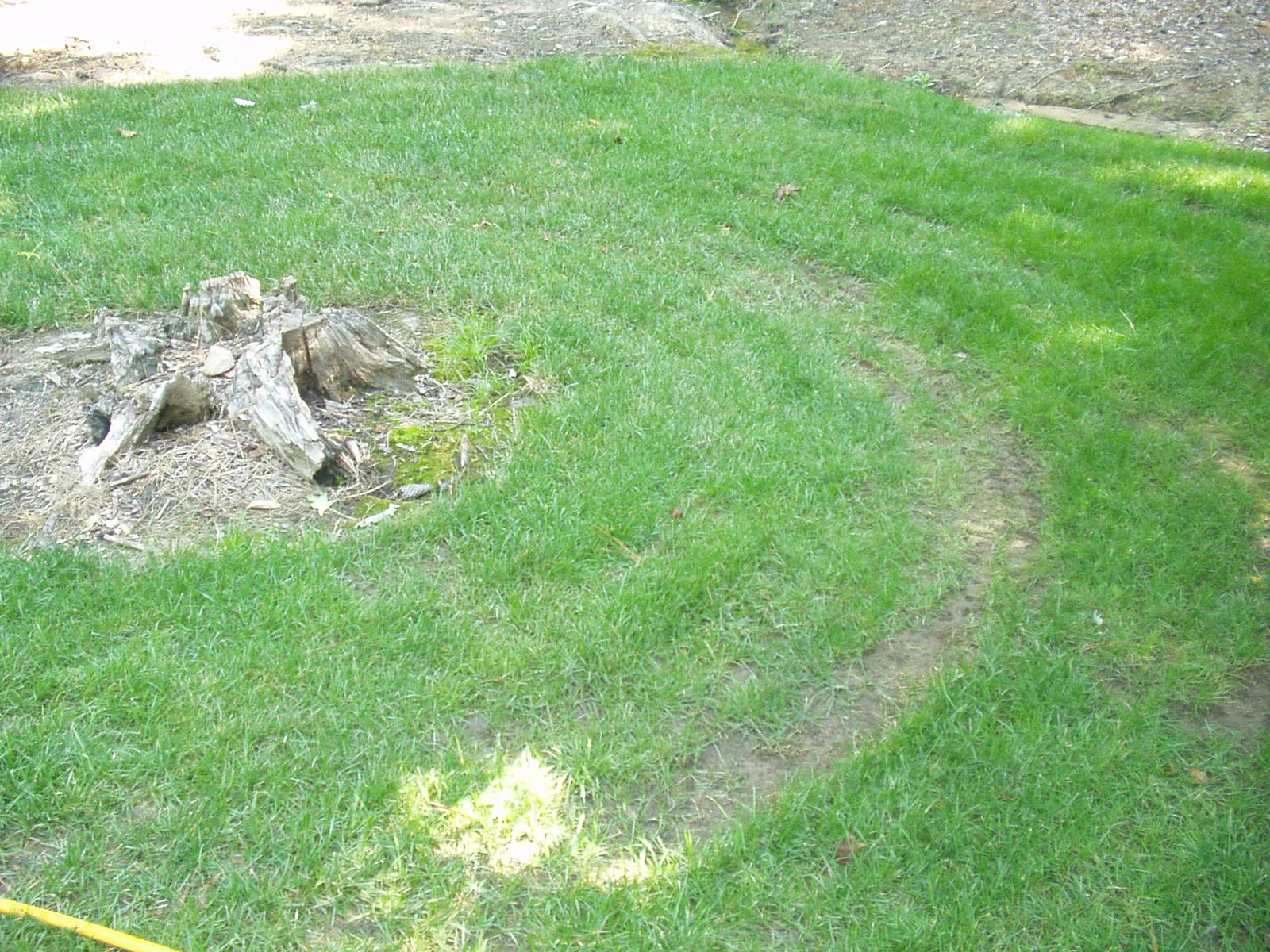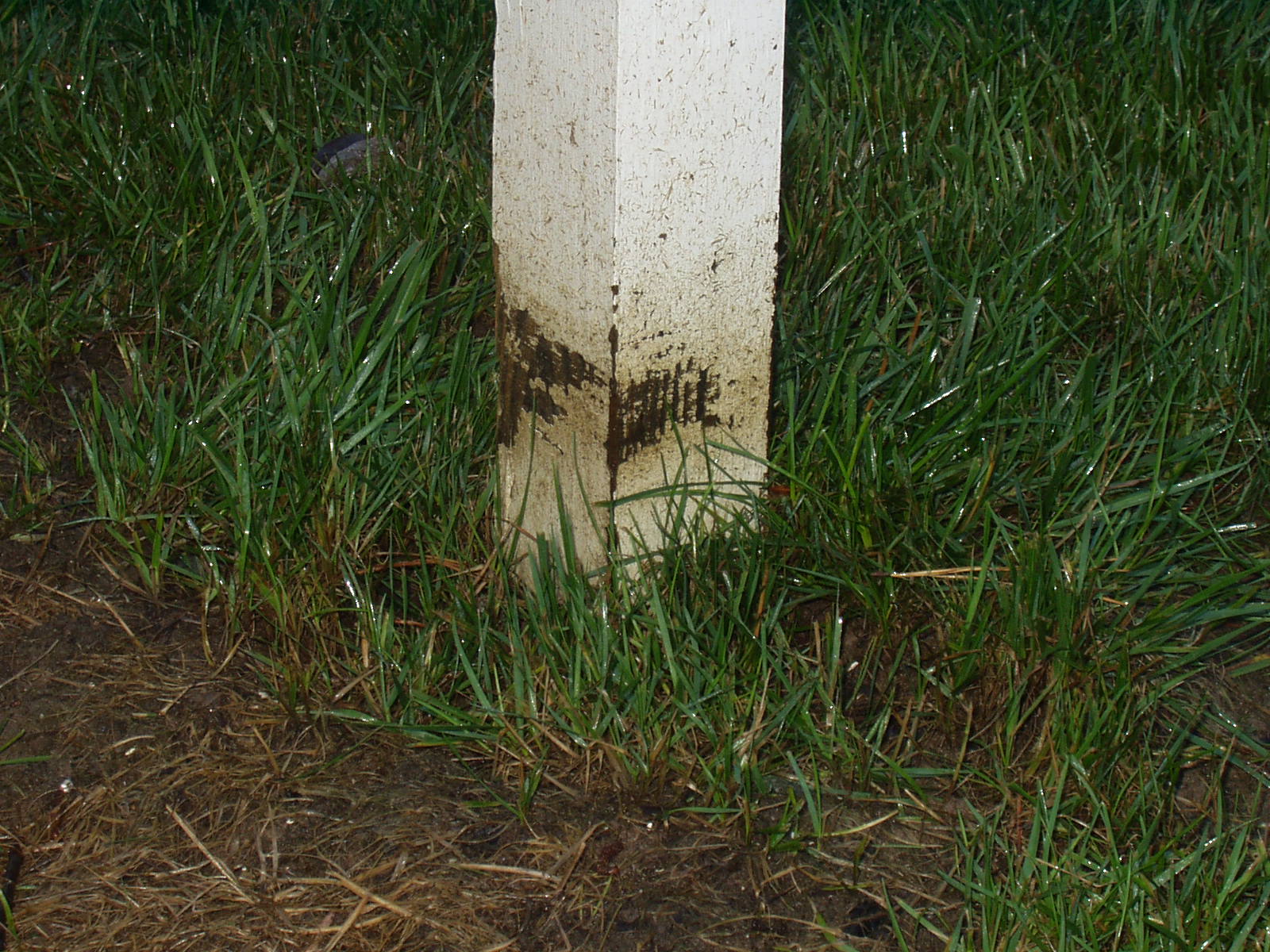Hybrid Turf-Type Tall Fescue Lawn Establishment
Turf-type fescue is the most common grass you see in central North Carolina lawns. It creates the best looking lawns and stay a beautiful green year around.
A successful fescue lawn depends on a deep root system. This begins with addressing any drainage or soil quality issues your yard may face. Re-grading may be necessary to correct slow drainage and standing water. For poor soils, adding compost or improved native soil is an investment that will pay off forever. Proper watering will also promote a deep root system.
With proper after seeding care, getting fescue seeds to germinate is the easy part of establishment; getting the plant to survive its first summer drought is the challenge. The deep root system is the difference maker.
Basic Lawn Care Service Includes:
Early Spring: Slow-release balanced fertilizer, pre-emergent and post-emergent weed control
Late Spring: Slow-release balanced fertilizer, pre-emergent and post-emergent weed control
Mid-Summer: Insect inspection and post-emergent weed control; if needed, soil sample taken to check pH level, lawn evaluation, aerating and over-seeding recommendations
Early Fall: Slow-release balanced fertilizer or seed starter fertilizer and post-emergent weed control
Late Fall: Quick-release nitrogen fertilizer
Additional Lawn Care Services:
Brown Patch Control: This service controls ugly brown patch disease. This is recommended beginning in late spring until mid-summer while brown patch is a threat. Monthly follow up treatments are needed until the threat 0f disease eases.
Lime: Proper amount necessary is determined by the annual soil test provided with the lawn care program. Lawns with acceptable pH levels will get a maintenance level application.
Grub worm Control: Late summer service to control grubs after they hatch and are actively feeding on grass roots near the soil surface.
Dethatching: Removing excessive thatch caused by mulching or side discharge mowers is a cultural practice that will help control lawn diseases such as brown patch and help oxygen reach the soil level. This service is commonly performed prior to aerating and seeding and is only necessary for extreme situations in fescue lawns. Weeds and moss can also be removed while dethatching to improve seeding conditions. Years of grass clippings accumulate and cut off air and water from the soil. First, we will employ the use of a dethatching machine over the areas of heavy thatch. Then all of the dead plant material will be raked up and removed. The soil is exposed between the growth of living fescue, ready to accept the seed.
Annual Aerating and Over-seeding: Proper root development depends on loose soil, especially when it comes to turf grass. Thorough aeration of compacted soils is the only way to loosen soils without disturbing existing turf plants. Fertilizers and pH correcting lime also reach root zones easier when soils are loosened. It could take years to correct the pH of compacted soil. We depend on our aeration efforts to give us the results we deliver. Fescue plants have a life span of 3-5 years so introducing a new generation each fall with aeration is sound practice. Annual care in the form of heavy aeration and light over-seeding will help keep your fescue lawn healthy and vigorous.
Top-dressing: A thin layer of organic material is spread across the surface of the lawn and then aerated into the soil. For warm season lawns topdressing along with aeration is performed mid spring as the turf is coming out of dormancy. TOP-DRESSING tr. verb 1. To apply manure on the top of, prior to being plowed into the existing soil. 2. the act of one who top-dresses soil, as with fertilizer, a road as with crushed stone, or a lawn with rich organic matter to be aerated into the soil, etc; also, material so applied 3. a process performed by Specialized Landscape Services to improve soil conditions in existing lawns.
Growth Regulator: Growth regulators are great tools to manage landscapes. They also offer benefits to the lawns and shrubs that they are used on, not to mention the cost savings realized when employed. But for reasons unknown growth regulators are not an easy sale. After all, we want to see our landscapes grow and prosper in to mature wonderlands. However, at times the idea of not mowing and trimming become attractive. Lawns and landscapes plantings show benefits beyond the reduction in growth. Lawns require less water, disease control efforts last longer, and a deeper darker color can be noticed. Turf plants compensate for the loss of top growth by growing a deeper and more aggressive root system. Growth regulators are also recommended on newly installed sod. Over the past few years, I have mastered the use of growth regulators of my own lawn and with a combination of brown patch applications. The end result is an impressive carpet of deep green fescue. I do strongly recommend a fungicide program when using growth regulators since lawns need to grow to recover from brown patch. You can expect slow growth for approximately four weeks before a reapplication is necessary. The spring rapid growth period is a great time to use these valuable products. Shrubs benefit by putting on more dense shoot growth and can experience more inner growth. Shrubs don't like constant trimming that removes new growth causing them to become leggy and unattractive. Some plants respond better than others in that their growth will remain slower than other plants. On average, you can expect 10-12 weeks of persistent activity.
Watering Fescue
Properly watering your lawn will improve turf quality and reduce your water bill. When my lawn has reached total saturation from a rain event, it can go twelve to fourteen days before it begins to show signs of drought stress. That is when I go to my irrigation controller to re-saturate the ground again. I'll water my lawn twice in one day and then again once the next day and then my lawn is good for another twelve to fourteen days. Since I have been observing these watering practices my water bill has been greatly reduced while improving the quality of the turf.
This type of irrigation scheduling forces turf plant roots to go deep into the soil while allowing thatch layers to dry out, thus reducing the turf disease pressure.
Fescue needs approximately 1 inch of water per week to perform its best whether that comes in the form of rain or through your irrigation system. Keeping mind that many factors and site situations will make that figure fluctuate. The only way to determine how much your lawn needs is to evaluate its performance and log irrigation efforts. I strongly recommend watering “days consecutive” instead of “days alternate”. Everyother day irrigation is the worst schedule for your lawn!
Every other day watering keeps active root systems to remain shallow in the soil, keeps thatch layers damp and fungus friendly, and makes turf grass plants vulnerable to failure. Just as important as reducing your water bill, improving turf quality and protecting your investment will be achieved by adjusting the watering schedule for your lawn.
Push mowers are the best when the health of your lawn is in mind.
Your Lawn and Mowing
While proper mowing is one of the most important cultural practices you can perform for your lawn, improper or poor mowing habits can be the difference between healthy turf and bare ground. Taken for granted is the proper and correct way to mow. Like a car wash and a haircut, you can get a bad job, yet you still got a car wash or a haircut. The lawn, being a living thing, can suffer long term consequences when improperly cared for. I see the efforts of establishing and maintaining lawns go to spoil due to the careless operations of the lawn mower.
With the popularity of the zero turn style mowers at an all-time high with both service providers and homeowners, the quality of lawns have begun to decline. These fast-mowing machines make quick work of the task of mowing. Not to mention the fun you can have zipping across the lawn. I don't mean to talk down the mower itself… it's the improper way it is being operated that causes problems. Specifically, where the turn-around spot on the lawn is that takes the beating. Week after week, mowing after mowing those same spots are the site where the mower turns around and heads off in the opposite direction. Compaction due to the overuse of these areas begin to thin the turf, and then there is the occasional event where you get some wheel spin, compromising the integrity of the turf plants.
Turfgrass establishment in these battered areas, in most cases, is impossible. Young seedlings don't want heavy tires squashing and grinding them into compost. That is why year after year spots in the lawn seem to be unwilling to fill in. By mowing the lawn and using the mower to remove leaves with these heavy machines reduces the amount of turf plants that have a great chance of becoming fully matured. There are times when using the most efficient machine is a bad idea. And they are few. Lawn establishment is one of those times.
To sum things up, the simple task of mowing the lawn deserves the respect of something more complex than just beating back vegetation. You invest in a simple pleasure that brings joy to all that appreciate beautiful surroundings. Mowing is the task that makes up the majority of the needs of the lawn and at times it is the thing that is the biggest challenge for the turf plants to endure.
Choosing the Proper Mower
Although we do not provide the service of mowing grass we do have an opinion on the equipment that should be used for the job. We recommend to everyone that their lawn be mowed with a push mower and that the clippings be bagged and composted. We also understand that that is not practical for all lawns, mainly the larger lawns. In these cases the use of a self-propelled walk behind mower is acceptable.
This is an example of a self-propelled walk-behind mower. If you don't see this in your lawn ask your care provider to use these.


